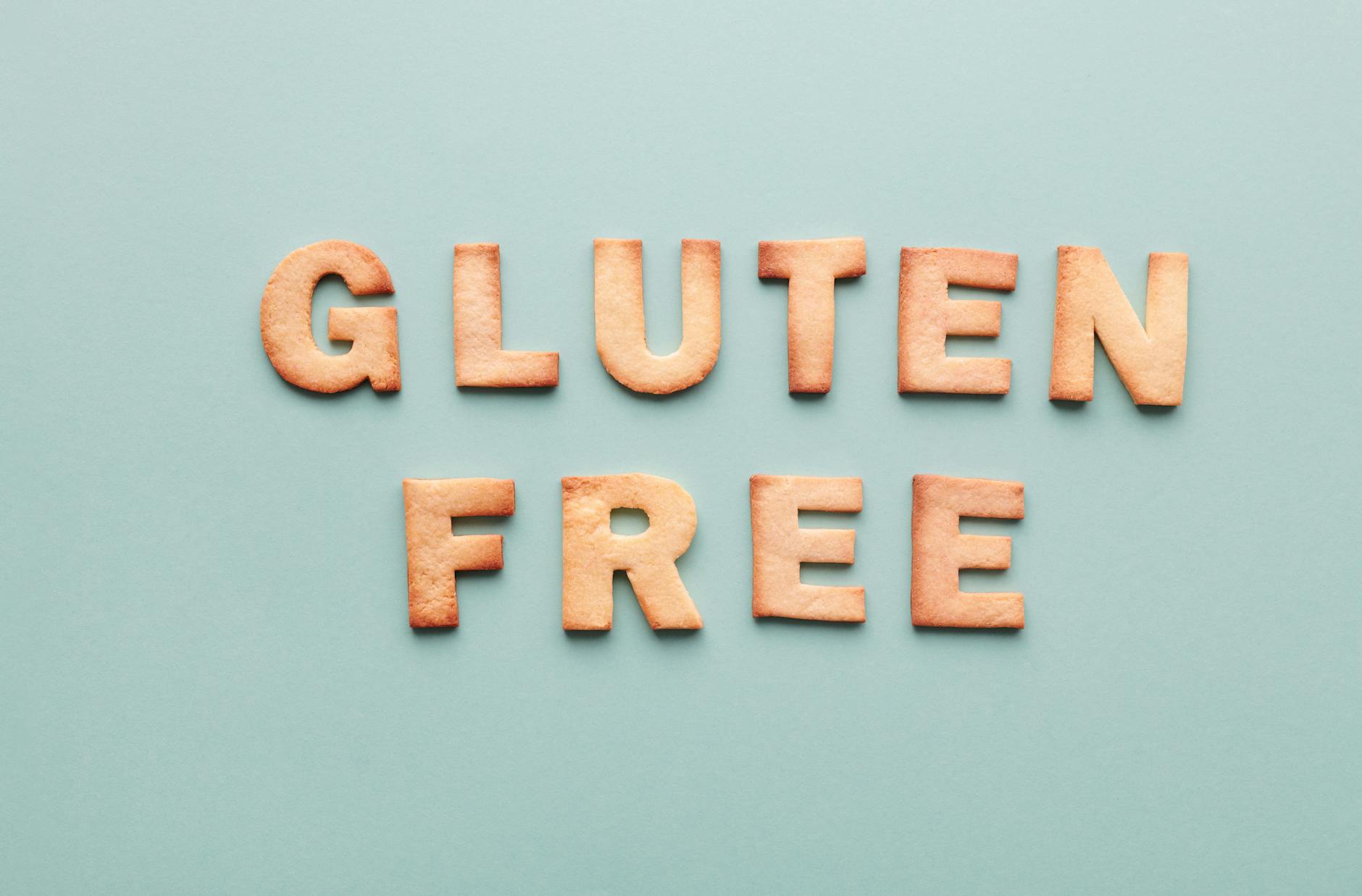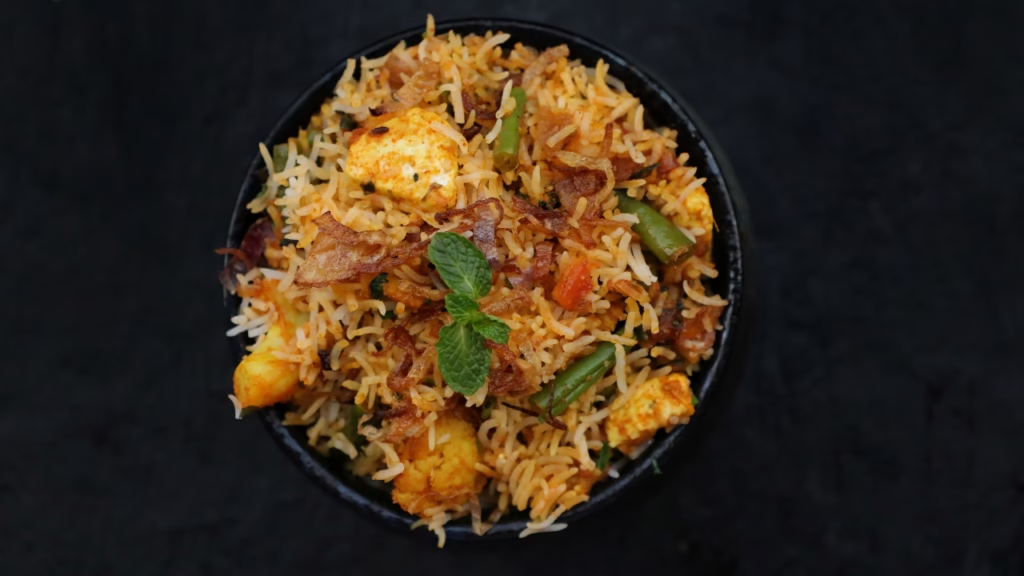Finding gluten-free desserts that taste amazing doesn’t have to be a challenge. Whether you’re avoiding gluten for health reasons or by choice, there are countless options that don’t skimp on flavor. From rich cakes to chewy cookies, gluten-free treats can be just as indulgent and satisfying as their traditional counterparts. Get ready to explore a delicious variety of desserts perfect for everyone, regardless of dietary restrictions.
What Are Gluten-Free Desserts?
Gluten-free desserts are sweet treats made without gluten, a protein found in wheat, barley, and rye. For people with gluten intolerance, celiac disease, or those choosing to avoid gluten, these desserts offer a delicious alternative that maintains rich flavors and textures. You might wonder, what makes a dessert gluten-free? Let’s explore that.
Definition of Gluten-Free Desserts
A gluten-free dessert is one that substitutes any wheat-based ingredients with alternatives that do not contain gluten. This means using gluten-free flours like almond flour, coconut flour, or rice flour instead of traditional wheat flour. The absence of gluten allows these desserts to be safe for those who cannot tolerate it while still being remarkably tasty.
Common Ingredients Used in Gluten-Free Baking
To create satisfying gluten-free desserts, bakers often rely on various substitute ingredients. Here are a few commonly used ones:
- Almond Flour: Provides a nutty flavor and moist texture.
- Coconut Flour: Known for its absorbent properties, it adds a tropical taste.
- Oats: When certified gluten-free, oats are a hearty base for cookies and bars.
- Cornstarch: Commonly used as a thickening agent in puddings and fillings.
- Arrowroot Powder: Great for binding, it enhances texture in baked goods.
Popular Gluten-Free Dessert Options
There’s no shortage of delicious gluten-free dessert options. Here are some popular choices that everyone can enjoy:
- Flourless Chocolate Cake: Rich and intensely chocolaty, this cake is a favorite.
- Cheesecake: Often made with a crust of crushed nuts or gluten-free cookies.
- Brownies: Fudgy and decadent, they can be made using almond flour or cocoa powder.
- Panna Cotta: A creamy Italian dessert that’s naturally gluten-free.
- Fruit Crisps: Using oats and nuts for the topping adds crunch without gluten.
Exploring gluten-free desserts can lead you to delightful recipes that surprise and satisfy even the most devoted dessert lovers.

Photo by Rachel Claire
Popular Types of Gluten-Free Desserts
Gluten-free desserts are often as indulgent as their traditional counterparts. You can find a multitude of options that satisfy a sweet tooth while being safe for those who need to avoid gluten. Let’s explore the popular types of gluten-free desserts that you can easily whip up or enjoy at your next gathering.
Cakes
Cakes can bring joy to any occasion, and gluten-free options don’t hold back on flavor or texture. Two standout types are:
- Flourless Chocolate Cake: This decadent cake combines chocolate and eggs, resulting in a rich, fudgy treat. It’s a favorite among chocolate lovers and pairs wonderfully with a scoop of ice cream.
- Almond Flour Cakes: Made using almond flour, these cakes are light and moist. They can be flavored with vanilla or any fruit puree, offering versatility without the gluten.

Photo by Rachel Claire
Cookies
Cookies are a beloved dessert, and gluten-free options are plentiful. Here are two popular varieties:
- Coconut Macaroons: Chewy and sweet, these cookies made from shredded coconut and egg whites are a delightful treat. They can be dipped in chocolate for an extra layer of flavor.
- Peanut Butter Cookies: With just a few ingredients—typically peanut butter, sugar, and eggs—these cookies are easy to make and deliciously satisfying. They are perfect for those who crave a nutty flavor in their dessert.
Pies and Tarts
Creating gluten-free pies and tarts starts with the crust. Here’s how to make them:
- Gluten-Free Crusts: Use a blend of almond flour and coconut flour for a nutty, flavorful base. You can also utilize gluten-free graham cracker crumbs for a sweet crust in cheesecakes or fruit tarts.
- Fillings: Classic fillings like pumpkin, apple, or berry can easily be made gluten-free. Just ensure that any thickening agents, such as cornstarch, are also gluten-free.
Puddings and Mousses
These creamy desserts are naturally gluten-free and can be made with ease. Consider trying:
- Chocolate Mousse: A simple blend of dark chocolate, whipped cream, and eggs creates a rich dessert that will wow your guests. It’s light yet incredibly satisfying.
- Vanilla Pudding: Vanilla pudding can be whipped up using gluten-free cornstarch and milk, making it a quick option for a comforting dessert.
Frozen Desserts
On hot days, frozen desserts are a refreshing treat. Here are a couple of crowd-pleasers:
- Sorbets: Made from fruit and sugar, sorbets are light, refreshing, and entirely gluten-free. You can customize the flavors to suit your taste.
- Gluten-Free Ice Creams: Many ice creams contain no gluten, but it’s wise to check labels. Making your own at home with coconut milk and flavorings ensures a gluten-free option that’s creamy and delicious.
The world of gluten-free desserts is vast, and the options available can cater to everyone’s taste preferences. Whether it’s a cake, cookie, or frozen dessert, there’s something sweet waiting for you.
Key Ingredients for Gluten-Free Desserts
When it comes to creating delicious gluten-free desserts, understanding the key ingredients can make all the difference. By using the right flours, sweeteners, binders, and flavor enhancers, you can achieve delectable results without the need for gluten. Let’s explore these essential components to elevate your baking experience.
Gluten-Free Flours
Choosing the right flour is fundamental in gluten-free baking. Here are some popular options along with their unique characteristics:
- Almond Flour: This finely ground flour provides a rich, nutty flavor and moisture to baked goods. It’s great for cookies, cakes, and muffins.
- Coconut Flour: Lightweight and highly absorbent, coconut flour requires more liquid in recipes. It adds a subtle sweetness and is perfect for pancakes and cakes.
- Rice Flour: A staple in gluten-free baking, rice flour brings a mild flavor. It’s often used in combination with other flours for texture.
- Oat Flour: Made from ground oats, this flour offers a hearty flavor. Ensure it’s labeled gluten-free, as oats are often cross-contaminated.
Using a blend of these flours can create a balanced texture and flavor in your desserts. Don’t hesitate to experiment and find the mix that works best for your recipes.
Sweeteners and Binders
Sweeteners not only add flavor but also impact the texture of gluten-free desserts. Here are some alternatives to consider:
- Honey: A natural sweetener that adds moisture and flavor. It works well in cakes and cookies.
- Maple Syrup: This liquid sweetener provides a rich, complex flavor. Use it in puddings or drizzled over desserts for added sweetness.
- Xanthan Gum: A common binder in gluten-free baking, xanthan gum helps provide the structure that gluten usually offers. Use it sparingly, as a little goes a long way.
- Chia Seeds: Ground chia seeds can act as a binding agent when mixed with water, making them a great egg substitute in vegan recipes.
Incorporating these sweeteners and binders thoughtfully can enhance your gluten-free treats and keep them from being crumbly.
Flavor Enhancers
Spices and extracts play a vital role in elevating the taste of gluten-free desserts. Consider using:
- Vanilla Extract: A staple in baking, vanilla adds depth and richness to cakes and cookies. Opt for pure vanilla extract for the best flavor.
- Cinnamon: This spice is perfect for adding warmth to desserts. Incorporate it into brownies, cakes, and even fruit crisps for an extra kick.
- Cocoa Powder: For chocolate lovers, unsweetened cocoa powder adds a deep chocolate flavor without any gluten.
- Zest from Citrus Fruits: Lemon or orange zest enhances sweetness and adds brightness to your baked goods.
These flavor enhancers can transform simple recipes into memorable treats that stand out.

Photo by Julias Torten und Törtchen
Tips for Baking Gluten-Free Desserts
Baking gluten-free desserts requires special attention to detail. With the right techniques, you can achieve delicious results that will please everyone. Below are some essential tips to enhance your gluten-free baking experience.
Measuring Ingredients Properly
Measuring ingredients accurately is crucial in gluten-free baking. Unlike standard baking, gluten-free recipes can vary significantly based on the type of flour used. Here’s how to get it right:
- Use a Kitchen Scale: Weigh your flour and other ingredients for precision. Avoid using volume measurements like cups, as they can lead to inconsistencies.
- Spoon and Level: If using volume measurements, spoon flour into the measuring cup and level it off with a knife to avoid packing it down.
- Check for Freshness: Ensure your ingredients, especially baking powder and flours, are fresh. Stale ingredients can negatively impact the taste and texture of your baked goods.
Taking the time to measure correctly can make a big difference in the final outcome of your gluten-free desserts.
Monitoring Baking Times and Temperatures
Baking times and temperatures can differ for gluten-free recipes. Here’s how to adjust your approach:
- Lower the Temperature: For cakes, consider baking at 20°F lower than a traditional recipe. This helps prevent over-browning while allowing the center to cook through.
- Extend Baking Time: Gluten-free desserts often take longer to bake. Start checking for doneness a few minutes earlier than the recipe suggests, but be prepared to add extra time.
- Use an Oven Thermometer: Ovens can be off in temperature. An oven thermometer will help you ensure accurate heat for even baking.
Adjusting these factors will lead to better results in your gluten-free baking endeavors.
Testing for Doneness
Determining if your gluten-free desserts are fully baked requires different techniques. Here’s how to test for doneness effectively:
- Toothpick Test: Insert a toothpick into the center of the dessert. If it comes out clean or with a few moist crumbs, it’s done. If wet batter clings to it, continue baking.
- Visual Cues: Look for a golden-brown color and slight pulling away from the edges of the pan, indicating that the dessert is set.
- Touch Test: Gently press the top of the dessert; it should spring back slightly. If it leaves an indentation, it may need more time.
Using these methods will help ensure your gluten-free desserts are perfectly baked every time.

Photo by Larissa Farber
Health Benefits of Gluten-Free Desserts
Gluten-free desserts offer several advantages, especially for those with gluten sensitivities or celiac disease. Exploring these options can lead to more than just tasty treats. Here are a couple of key benefits worth noting.
Digestive Health
For individuals with gluten sensitivity or celiac disease, gluten can cause a range of digestive issues, from bloating to serious inflammation. Switching to gluten-free options can significantly improve digestive health for these individuals.
Gluten-free desserts often incorporate alternative flours like almond or coconut flour, which can be easier on the digestive system. These ingredients tend to be higher in fiber, promoting healthy digestion. Including gluten-free treats in your diet can help alleviate discomfort, making dessert time enjoyable instead of distressing.
Think of gluten-free desserts as your digestive ally! Just as some foods soothe your stomach after a hearty meal, gluten-free options can help maintain balance and comfort.

Photo by Henri Mathieu-Saint-Laurent
Increased Variety in Diet
One of the most delightful aspects of gluten-free desserts is the opportunity they provide to explore new ingredients. Going gluten-free often means experimenting with flours like almond, coconut, or even chickpea, broadening your culinary horizon.
By trying unique components and flavors, you can create desserts that not only cater to dietary needs but also introduce exciting tastes and textures. This encourages creativity in the kitchen and leads to trying new recipes. Why stick to the same old desserts when a world of flavors awaits?
Imagine whipping up a coconut flour cake that is both sweet and tropical. Or using almond flour to create a rich, nutty brownie. These transformations make baking less about restriction and more about discovery.
The journey into gluten-free desserts is an adventure filled with flavor, nutrition, and satisfaction. Why not dive in and see what new favorites you might find?
Popular Recipes for Gluten-Free Desserts
When it comes to satisfying your sweet tooth without gluten, there are plenty of delectable options. From rich cakes to delightful cookies, gluten-free desserts can be scrumptious and memorable. Here’s a closer look at some popular gluten-free dessert recipes that everyone will love.
Flourless Chocolate Cake
Flourless chocolate cake is a dessert that reigns supreme among chocolate lovers. This cake omits the traditional flour and instead uses chocolate, butter, and eggs. The result is a rich, fudgy treat that pleases any palate. Its dense texture and intense chocolate flavor make it a perfect indulgence for special occasions or a cozy night in.
If you’re looking to give it a try, check out these recipes:

Photo by Dee Dave
Coconut Macaroons
Coconut macaroons are beloved for their chewy texture and sweet coconut flavor. Made primarily from shredded coconut and egg whites, these treats are simple yet wonderfully satisfying. They can be dipped in chocolate for an added touch of indulgence.
Why are they so popular among gluten-free lovers? It’s all about the flavor and ease of preparation. You can find tasty coconut macaroon recipes here:
Gluten-Free Cheesecake
Cheesecake is a versatile dessert that can easily be adapted to be gluten-free. The crust can be made using gluten-free graham cracker crumbs, almond flour, or even crushed nuts, ensuring everyone can enjoy a slice. The filling, made from cream cheese, sugar, and eggs, can be flavored with vanilla, chocolate, or fruit.
A few delicious gluten-free cheesecake recipes to try:
As you explore these popular gluten-free desserts, you’ll discover just how satisfying and indulgent they can be. Whether you have dietary restrictions or simply enjoy delicious treats, these recipes are sure to delight!
Conclusion
Understanding the benefits and tasty possibilities of gluten-free desserts can inspire anyone to experiment in the kitchen. Here’s a deeper look into why exploring these desserts is a worthwhile endeavor.
Health Benefits of Gluten-Free Desserts
Gluten-free desserts can improve health, especially for those with gluten sensitivities. Here are some key advantages:
- Digestive Health: Gluten can cause digestive issues for many. Gluten-free desserts use alternative flours that are easier on the stomach, contributing to better digestive comfort.
- Increased Nutritional Variety: Many gluten-free desserts are made with nutritious ingredients, offering more fiber and essential nutrients. Ingredients like almond and coconut flour can be beneficial for overall health.
Trying gluten-free options can be more than just delicious; it could make you feel better too.
Encouragement to Explore
Now is the time to explore different gluten-free dessert recipes. With a wide array of flavors and textures available, there’s something for everyone. Why not start with easy recipes like coconut macaroons or flourless chocolate cake?
Some popular resources for inspiration include:
- 25 Gluten-Free Dessert Recipes Everyone Will Love
- 40 Gluten Free Dessert Recipes Everyone Loves
- Easy Gluten-Free Desserts
Diving into the world of gluten-free desserts can be a delightful journey. Whether you’re avoiding gluten for health reasons or just exploring new culinary adventures, there’s a wealth of tasty recipes waiting for you to enjoy.

Photo by Rachel Claire
STAY CONNECTED WITH US


